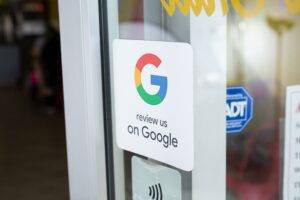
As buyers (whether that’s B2B or B2C) we’re increasingly savvy. Far from making purchasing decisions alone, we trawl the web in search of trust signals from the brands we may want to buy from, harnessing other people’s experiences, industry credentials, and client lists.
But as we acclimatise to the fact that we’re all hyper-connected by technology, companies are quickly recognising the transformative potential of negative feedback.
Yes, you read that right. B2B business growth depends on attracting new customers and minimising (if not eliminating) customer churn. Far from being detrimental, negative reviews can serve as catalysts for innovation, driving improvements and, from a PR perspective especially, create moments of awe. Embracing negative reviews can lead to PR strategy evolution, enhanced customer satisfaction, and opportunities for unforgettable experiences.
When a bad review is better than no review
Of course, in an ideal world, we wouldn’t be dealing with any negativity and we’d intuitively know what to deliver to which customer at any given time to determine the ultimate satisfaction. That is the endgame every business strives for and there is a huge opportunity to amplify success stories. But alas, the B2B buying process can be complex and it’s not always possible to deliver a one-size fits all strategy. Perceptive companies don’t shy away from negativity, understanding that there are times when customers will be less than satisfied.
Thanks to the plethora of online communities and social media platforms, conversations can happen very easily and very publicly. These conversations represent the voice of the customer and they will happen with or without a brand listening in. Innovative brands tune in and embrace this feedback loop.
How to respond to a negative review
Leaving negative comments out in the open with no acknowledgment represents a missed opportunity to resolve that customer’s dissatisfaction. But worse still, it demonstrates to the outside world a lack of commitment to customer satisfaction, accountability, and to continual improvement, contradicting the ethos of every brand looking for sustainable growth.
Conversely, brands that actively lean into negativity as a key part of their strategy powerfully demonstrate a strong ethos for all the above. Rather than sweeping negative feedback under the rug, businesses can leverage it as an opportunity to showcase their responsiveness and accountability. By openly acknowledging shortcomings and demonstrating a willingness to listen and learn, companies can build trust and credibility with their audience, ultimately strengthening their brand reputation.
This relies on continuous auditing of channels to track mentions of your brand across various review platforms, social media channels, forums, and other online spaces. Tools such as Google Alerts, Mention, Hootsuite, and Social Mention can help you stay informed about new reviews and feedback in real-time. Knowing what’s being said about your brand is half the challenge, next is time for action. Here are seven tips for responding to a negative review to manage online reputation and foster trust and loyalty amongst customers:
Develop a structured process for monitoring and responding to reviews, assigning responsibilities to specific team members or departments.
Develop criteria for categorising reviews based on factors such as sentiment, rating, and specific issues mentioned.
Respond to negative reviews promptly, ideally within 24-48 hours, to demonstrate attentiveness and concern for customer feedback.
Maintain a professional and empathetic tone in your responses, acknowledging the customer’s concerns and expressing a sincere desire to address the issue.
Provide practical solutions or remedies to address the customer’s concerns.
Take concrete steps to rectify the issue and prevent similar problems from occurring in the future, demonstrating a commitment to continuous improvement.
Regularly analyse feedback from negative reviews to identify recurring issues, patterns, and trends. Use this information to identify areas for improvement in products, services, or customer experiences and implement proactive measures to address them.
The awe factor
Much has been written recently about the psychological power of awe. Feeling wowed or in awe is about shifting someone’s attention for a moment. It can improve our well-being and even positively affect our physiology. This Guardian report acknowledges that feeling awe is not only derived from a visit to one of the world’s natural wonders – more often, feeling awe is about people.
The way you handle negative criticism can be a powerful moment to create awe in your PR and business growth strategy. It’s an opportunity to show your human side, show customers you care, and then act with integrity to make things happen. Nailing it can be your superpower.
When to build negative reviews into your business growth strategy
There are instances when brands can turn negative reviews and incidents into positive PR opportunities that also impact a business’ growth strategy. Careful listening to customer feedback can help bring decisive action and continuous innovation.
For example, following concerns raised by mental health advocates about the portrayal of suicide in the Netflix series “Thirteen Reasons Why,” Netflix responded by incorporating trigger warnings and additional resources for viewers. The streaming platform engaged in meaningful dialogue with mental health experts and organisations to address the criticisms constructively, and publicly. By demonstrating responsiveness and a commitment to viewer well-being, Netflix transformed the negative publicity into an opportunity to raise awareness about mental health issues and promote responsible content consumption.
Another example of turning a negative review into a positive is the way that Amazon continues to respond to concerns about fake reviews on its platform. Amazon implemented measures to crack down on fraudulent activity, took legal action against individuals and businesses engaged in fake review schemes, and invested in technology to detect and remove fake reviews more effectively. By prioritising authenticity and trustworthiness, Amazon demonstrated its commitment to maintaining a fair and reliable marketplace, earning praise for its proactive approach to addressing a pervasive issue.
Rather than going silent, or arguing on social media, Ryanair chooses light hearted humour in its approach to negative reviews, with some posts even going viral. Some may think it’s brave to draw yet more attention to a negative view, but on the contrary, it serves to promote Ryanair as transparent, aware and in control, boosting customer trust.
Recognise the importance of your employer brand
It’s not just negative customer reviews that brands must be mindful of. As we face the additional pressures of a challenging economy and continuing skills shortages, the need to manage an employer brand is perhaps even more pressing to achieve sustainable growth with low attrition. In the same way that leaving a negative customer review unanswered can damage a brand, a negative Glassdoor review can do just as much damage if left. Employees are your best brand ambassadors. The same rules about acknowledging, being transparent about specific issues, and demonstrating that you’ve implemented any necessary changes apply here too.
An opportunity to innovate
Creating solid partnerships with customers and employees built on loyalty goes way beyond delivering the excellent service which is, essentially, expected. It’s as much about how a brand acknowledges criticism and implements meaningful changes. Leveraging negative feedback is an opportunity to let customers know they’re important, but it could also reveal your next business move or opportunity to innovate. Sounds straightforward – but are you doing it?
Read more:
The power of a negative review





